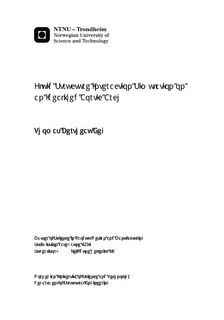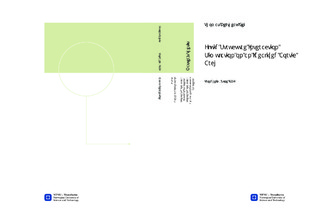| dc.contributor.advisor | Hellevik, Leif Rune | nb_NO |
| dc.contributor.author | Eeg, Thomas Bertheau | nb_NO |
| dc.date.accessioned | 2014-12-19T12:01:36Z | |
| dc.date.available | 2014-12-19T12:01:36Z | |
| dc.date.created | 2012-11-10 | nb_NO |
| dc.date.issued | 2012 | nb_NO |
| dc.identifier | 567014 | nb_NO |
| dc.identifier | ntnudaim:7570 | nb_NO |
| dc.identifier.uri | http://hdl.handle.net/11250/237133 | |
| dc.description.abstract | The aortic arch is at risk of several cardiovascular diseases, such as aortic dissection. Many of these risk factors are due to the fluid-structure interaction that occurs in the aorta. Fluid-structure interation (FSI) simulations are a very useful tool in identifying these risks. The goal of this study is to obtain a simplified picture of healthy physiological flow and lay the foundation for further studies on cardiovascular diseases in the aortic arch. A 3-dimensional idealized FSI model of the aorta was constructed from measurements found in the literature. This model was simulated using the commerical codes Abaqus and Ansys Fluent, coupled with the in-house code Tango. Attempts at simulating the model geometry including the braciocephalic, left common and left subclavian carotid arteries were unsuccesful, so a simlified model of only the aortic arch was simulated. Emphasis was placed on the investigation of different boundary conditions. An imposed massflow condition, a pressure condition with resistance or a varying elastance model was set on the inlet and combined with zero pressure, reflection free or Windkessel outlet boundaries. The mass flow inlet with Windkessel outlet gave the most reliable results since the other inlets were mostly incomplete approximations. No conclusion could be drawn on the viability of Ansys Workbench as a meshing utility for studies using Tango, due to lack of information. | nb_NO |
| dc.language | eng | nb_NO |
| dc.publisher | Institutt for konstruksjonsteknikk | nb_NO |
| dc.subject | ntnudaim:7570 | no_NO |
| dc.subject | MTPROD produktutvikling og produksjon | no_NO |
| dc.subject | Industriell mekanikk | no_NO |
| dc.title | Fluid Structure Interaction Simulation on an Idealized Aortic Arch | nb_NO |
| dc.type | Master thesis | nb_NO |
| dc.source.pagenumber | 55 | nb_NO |
| dc.contributor.department | Norges teknisk-naturvitenskapelige universitet, Fakultet for ingeniørvitenskap og teknologi, Institutt for konstruksjonsteknikk | nb_NO |

